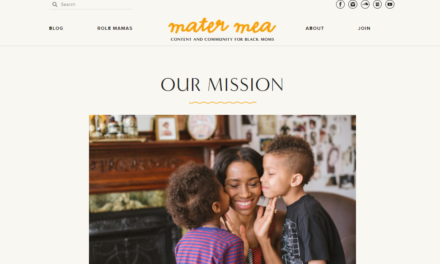
MARCH 21, 2025
full tilt
7 Steps to a Social Media Strategy
Jessica Dante didn’t have the money for her content startup. So, the blogger took social media into her own hands, spending her evenings learning how to do YouTube and Instagram. Over 10 years later, Love and London boasts 332K YouTube subscribers and 519K Instagram followers.
Social media is an attractive option for most content entrepreneurs. It doesn’t cost any money. It also provides access to audiences who are interested in consuming content. It’s a valuable avenue for marketing.
To get the most out of it, create a strategy using this simple seven-step process.
1. What’s in it for the business?
Many entrepreneurs make the mistake of starting their social media plans by selecting the platform or creating the content. However, you must first establish clear objectives related to your business. What do you want to achieve with your social media presence?
Having a singular focus is a must. (Sure, you may see other benefits, and that’s great. They’re just not what your social media activity will be centered around.)
Ask these questions:
- Which business objective do you want social media to help with?
- What is the marketing goal related to that?
- What is the purpose of your brand being on social media?
Example: Let’s construct a social media marketing strategy for an entrepreneur specializing in career-related content.
My business objective is to increase the belief that my brand is a valuable resource for information about attaining your career goals. My marketing goal is to increase subscribers to the monthly newsletter. My social media purpose is to establish this brand as a go-to expert for information about how to attain career goals.
2. Who is the audience?
Now that you know the why, you must describe the who. After all, you can’t create an effective social media plan if you don’t understand your audience and their online behavior. Beyond basic demographics, delve into their psychographics, interests, and online behavior.
After you think you have your target audience, narrow it further. For example, if you’re that career content entrepreneur in the example above, your initial target might be early-stage professionals. Narrow the group to early-stage professionals in their first post-graduate roles.
Example: Early-stage professionals who are employed in their first post-graduate roles. They seek to take on a new role in the next two years and put time outside work hours to expand their professional skills. They are active on LinkedIn and Instagram for career-related content. They prefer short-form video content and informative articles.
3. What content will you create?
At this stage, you want to identify the content topics that work for both your business and your audience. I recommend picking three to five overarching categories. In your strategy, provide detailed examples of content posts that fit into those categories. (This also makes content planning easier.)
Example: My content categories are:
-
Skill development
- Struggling with public speaking? Actionable tips to overcome your fear
- Master data analysis with these free resources
-
Networking and professional relationships
- Craft a LinkedIn invitation worthy of a yes response
- How to navigate challenging workplace relationships
-
Career planning
- Define your career vision and create a roadmap to achieve it
- Identify transferable skills for new opportunities
4. Where will you publish?
Select one primary channel where your audience expects to see and consume your topic on social media. Then, select two to three secondary channels where you can cross-post content.
Example: My primary social media platform is LinkedIn. Instagram is the secondary channel.
5. When will you post?
Consistency is key. Identify the minimum number of times you can create and publish. Don’t get ambitious. Also, determine how frequently you’ll publish content for each category. This information helps inform your content calendar planning.
Example: I will publish twice a week on LinkedIn and Instagram. Each weekly rotation will include a skills post and alternate between networking and career planning categories.
6. Why?
Revisit your business purpose in the first step. Based on your business, marketing, and social media purposes, what do you want the audience to do after consuming the social media content? Potential calls to action include follow, subscribe, like, share, visit website, and sign-up for email.
At this step, you also want to put numbers and timing to your goals. Pick a metric relevant to your goal, identify the relevant number, and set the time it should be completed.
Example: To become the go-to content resource for early-stage professionals interested in advancing their careers, my business will grow followers to the LinkedIn page by 50% in the next six months and increase newsletter subscribers from social media traffic by 5% in the next three months.
7. Review and adjust
Using your measurable goals as the timeline, add an appointment on your calendar to check in to see how well you achieved them. Also, revisit your goals based on external or internal triggering events.
By implementing these steps, you can get your social media guidance in writing and improve your opportunities for success.
Helpful Resources:
- 5 Social Media Strategy Tips [The Tilt]
- A Social Strategy for Real Life From Katie Brinkley [The Tilt]
- Get More and Do Less Social [The Tilt]
- 5 Things To Do To Convert Your Viewers Into an Audience You Own [The Tilt]
- 7-Step Social Media Marketing Template [Ann Gynn]
- The Social Shift: The Road Back to Community [Tilt Publishing author Katie Brinkley]
- Simple Social Media [Tilt Publishing author Annie Schiffmann]
– Ann Gynn
|
supported by: Earn More From Your Newsletters, Podcasts, and More.Earning revenue from your content shouldn’t mean sacrificing control of your brand, audience, or finances. With Memberful, content entrepreneurs can keep more of what they earn while building their own independent media businesses. Using Memberful, an independent creator or publisher with 2,500 subscribers paying $10/month can make $14,700 more per year compared to other leading publishing platforms — thanks to Memberful’s lower transaction fees, built-in publishing features, and a host of integrations with popular tools. Don’t leave money on the table — turn your content into a membership business and grow on your own terms.
|
tilt publishing book club
- Welcome to Joel Gaslin as Tilt Publishing’s newest author! He launched From Sales Rep to CEO: Why Not You? this week. He draws on his journey from medical sales to the executive suite with actionable strategies and real-world insights. Each chapter presents an independent lesson. He even offers the first chapter for free!
- Get it read aloud … Spotify added a new program for self-published authors of short-form fiction books. [ZDNET]
- Independents for independents … Fewer publishers do paperback releases, creating a challenge for independent bookstores who rely on the soft cover editions for a significant portion of their sales. (Is it an opportunity for self-published authors?) [News Center Maine]
- Invest in yourself … That’s the advice for nonfiction book authors facing challenging economic times. [Josh Bernoff]
things to know
Money
-
Hustling, hustling: Only 12% of creators make content a full-time job and only one-fourth of those rely on it as their main source of income, according to an Influencer.com study. [Hello Partner]
Tilt Take: Viewing your business as being an influencer doesn’t work well (or for long). Viewing your business through the lens of content entrepreneurship is more likely to bring long-term success. -
Roadshow: YouTube is hosting Creator Collective events in all 50 states this year as a networking opportunity for short-form video creators. [YouTube]
Tilt Take: In-person events are great ways to connect and learn. (Shameless plug: All types of content creators will gather this August for the Content Entrepreneur Expo. Can’t wait to see you there!)
Audiences
-
Podcast rise: A new Podcasts sidebar tab appears on Android TV apps. Now, listeners/viewers won’t need to dive to specific channels to find episodes or series. The tab sits just below the Movies & TV option. [9 to 5 Google]
Tilt Take: Another indicator of how seriously YouTube (and its users) values podcast content.
Tech and Tools
-
Me, but not me: Meta has apparently added an AI option for users who want to comment. The pencil with the star icon in the comments field makes it happen. [Mashable]
Tilt Take: Well, even if your followers use AI to comment, at least they’re still taking some action with your content.
And Finally
-
AI revolution: In this essay, Nic Young says AI will break the creator economy and create something new. “With A.I.’s ability to rapidly generate virtually unlimited text, images, audio and video, content scarcity becomes obsolete,” Nic writes. [Observer]
Tilt Take: Ummm … has content scarcity existed in the last 25 years? We’d say no, and AI may add to the proliferation of content, but it’s not removing a scarcity factor.
business of content
- Early bird pricing for CEX ends in just 10 days! Get your ticket now before prices go up!
- We want The Tilt newsletter to be useful and impactful for you, so please take 5 minutes to complete this short poll about the content we send you each week.
- Who’s Your Hero in 10 Years? (Content, Inc.)
- Are We Headed Toward Marketing Recession? (This Old Marketing)
- Beyond the Algorithm: Relationship Marketing for Authors & Publishers (Publish & Prosper)
Get more of the Full Tilt stories on TheTilt.com.
Know a content creator who’s going full tilt? DM us or email [email protected].
Want to advertise on The Tilt? Go here.
Or email us at [email protected].
Was this email forwarded to you? Get your own sub here.
Copyright ©2025 Lulu Press, Inc. All rights reserved.
Update your preferences | Unsubscribe | PO Box 12018, Durham, NC 27709





